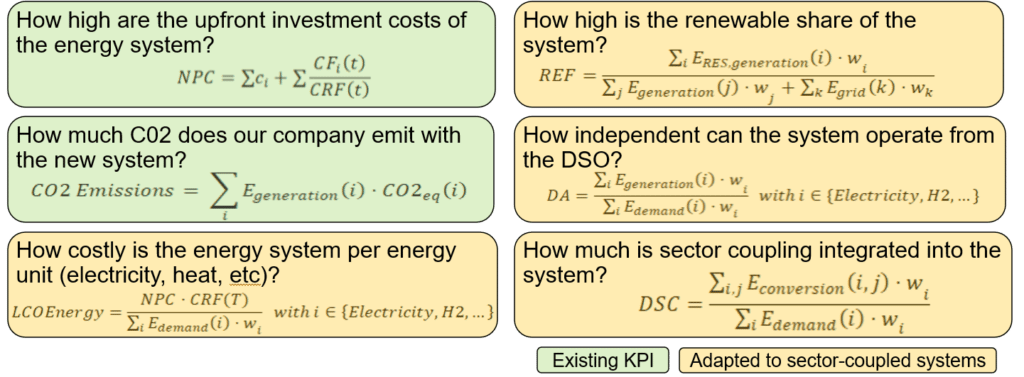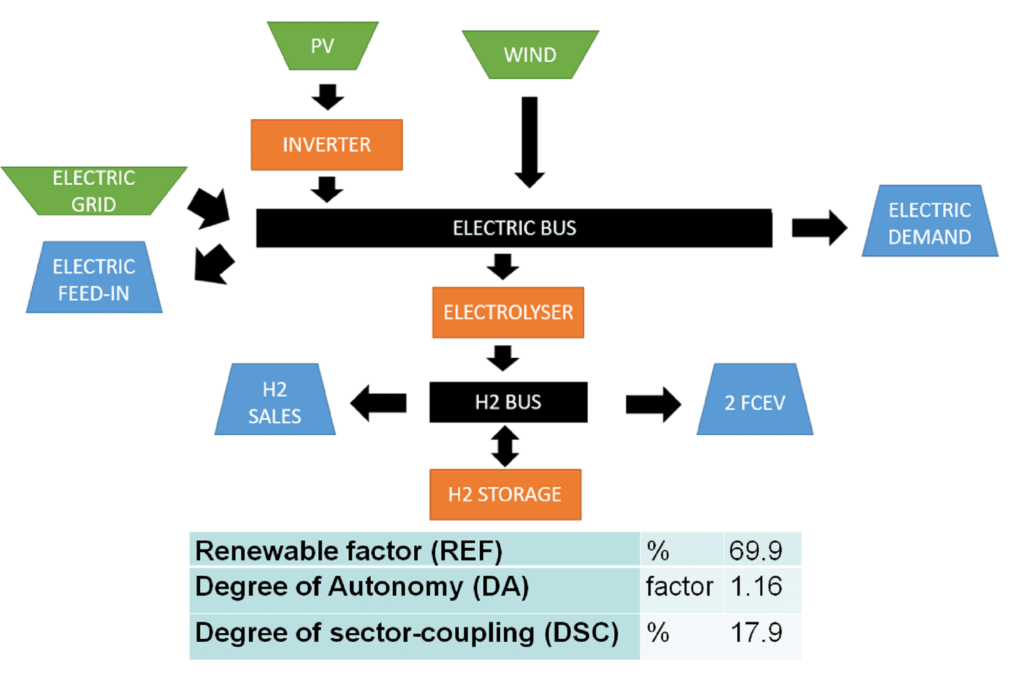The concept of sector coupling promises to provide flexibility for rising renewable shares. A strong metric is needed to determine the viability and economic feasibility of different sector-coupled energy systems, and a direct translation of key performance indicators (KPIs) commonly used for single vector systems is not always possible. The E-LAND project fills this gap by proposing KPIs relevant to assessing sector-coupled energy systems.
The proposed KPIs were presented in this year’s CIRED workshop. The paper evaluates various KPIs used for assessing single energy vector systems and their application for a sector-coupled system. Together with the pilots of the project, relevant KPIs were selected, further adapted, and in addition, a new indicator was proposed.

Proposal: Weighting of energy carriers
A multi-vector energy system can have energy carriers of different usable potentials, e.g. electricity and hydrogen. To be able to derive KPIs that cover the whole system as a whole (like LCOE, renewable share and self-sufficiency), a weighting of the energy carriers by their energy content is proposed. The reference unit is defined as Electricity Equivalent (ElEq), in reference to the commonly used gasoline gallon equivalent (GGE).
Intermediate conclusions and future work
Indicators proposed in the paper were applied to a case study and have proven that they can help to understand the more complex energy flows taking place in a multi-energy system. There are still areas where further research is needed in the project. These areas are:
- Base of energy carrier weighting, especially considering the value of heat.
- Relevance of sunk costs in economic KPI needs to be discussed.
- Application of KPIs to extreme scenarios.
Further research will be carried out both based on simulations and stakeholder interviews (including pilots) to ensure that the list of KPIs is complete.

Note: The full paper is to soon be published in the proceedings from the CIRED 2020 workshop, but its abstract is available here. Title of the paper: “Investment planning in multi-vector energy systems: Definition of key performance indicators”

